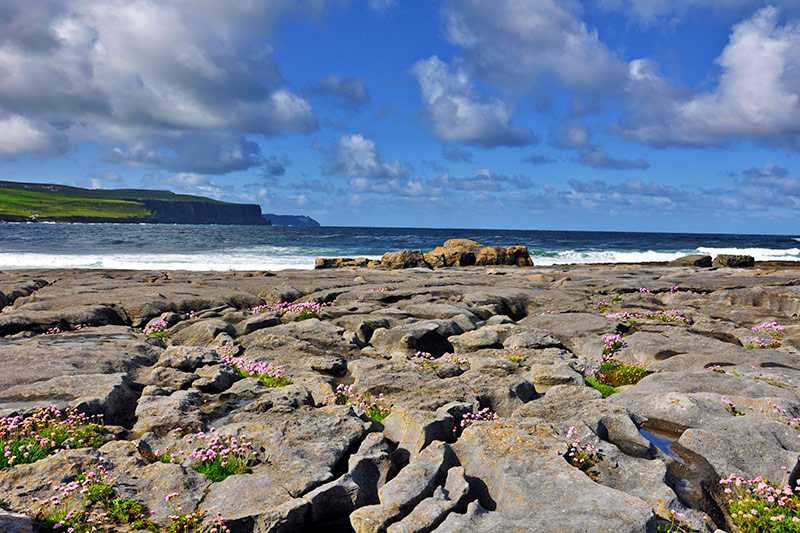Cliffs of Moher
About Cliffs of Moher
One of Ireland's top visitor attractions are the Cliffs of Moher, named after a fort which once stood on part of the cliff edge at Hag's Head. Located in the Burren...
About Cliffs of Moher
One of Ireland's top visitor attractions are the Cliffs of Moher, named after a fort which once stood on part of the cliff edge at Hag's Head. Located in the Burren region of County Clare, the cliffs have become a designated UNESCO Geopark.
Rising out of the Atlantic Ocean to a maximum height of 214 m (702.1 ft), they stretch for 8 km (4.97 mi) and are co...
Things to do near Cliffs of Moher
Attractions near Cliffs of Moher
Activities
About Cliffs of Moher
About Cliffs of Moher
One of Ireland's top visitor attractions are the Cliffs of Moher, named after a fort which once stood on part of the cliff edge at Hag's Head. Located in the Burren region of County Clare, the cliffs have become a designated UNESCO Geopark.
Rising out of the Atlantic Ocean to a maximum height of 214 m (702.1 ft), they stretch for 8 km (4.97 mi) and are composed of Namurian shale and sandstone with river channels cutting through them that are over 300 million years old. The cliffs feature an old watchtower called O'Briens Tower made of stone. Looking out from this tower, visitors can see the Aran Islands, the Maum Turk Mountains in Connemara and Loop Head to the south.
Tourism
The Cliffs of Moher Visitors’ Centre opened in 2007. This is built into the hillside en route to the cliffs. Alongside information displays about the cliffs and wildlife in the area, there is a TV screen, giving visitors a bird’s eye view of the cliff and various caves below them.
Flora and Fauna
The Cliffs are home to over 30,000 birds with 20 species represented, including puffins, hawks, gulls, ravens and chuffs. The site is a designated Special Protection Area for Birds due to its importance as a nesting site. The clint and gryke limestone pavements in the Burren region, inland from the cliffs, provide excellent habitats for wildlife. Arctic, Mediterranean and alpine plants all co-exist side by side and a scenic hike through the region provides excellent opportunities for viewing them.
